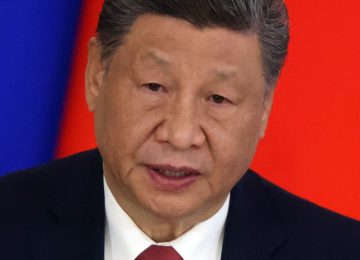By Dr. Parth Brahmbhatt

He is the Lead Enterprise Solution Architect at Tata Chemicals Ltd.
In the era of accelerated digital transformation, enterprises are increasingly challenged to balance operational excellence with environmental stewardship. The emergence of digital twins offers a compelling solution.
At this intersection of performance and purpose, digital twins have emerged as a strategic enabler, offering a powerful framework to simulate, optimize, and evolve complex systems with sustainability at their core.
From reactive operations to predictive sustainability:
Digital twins are virtual representations of physical assets, processes, or ecosystems that are no longer confined to engineering labs or pilot programs. They are now foundational to enterprise-wide transformation strategies. By integrating real-time data from IoT sensors, AI-driven analytics, and cloud-native platforms, digital twins empower organizations to move from reactive decision-making to predictive and prescriptive operations.
This shift is particularly critical as enterprises face mounting pressure from regulators, investors, and consumers to demonstrate measurable progress on ESG goals. Digital twins provide the visibility and agility needed to reduce waste, extend asset lifecycles, and optimize resource consumption, all while maintaining business continuity and resilience.
Global momentum and industry adoption:
The global digital twin market is on a steep growth trajectory, projected to reach $73.5 billion by 2030, driven by:
• Proliferation of IoT and edge computing, enabling granular, real-time monitoring.
• Advancements in AI/ML that unlock predictive insights and autonomous decision-making.
• ESG mandates and sustainability frameworks are pushing enterprises toward data-driven accountability.
Across sectors, digital twins are transforming operations in the following sectors.
• Manufacturing: Real-time process optimization reduces scrap and energy usage.
• Energy & Utilities: Grid simulations enhance renewable integration and minimize outages.
• Healthcare: Patient-specific twins enable personalized care and clinical efficiency.
• Urban Infrastructure: Smart cities leverage twins for sustainable mobility, energy, and waste management.
Technology stack:
To realize the full potential of digital twins, enterprise architects must orchestrate a robust and interoperable technology stack. This includes the:
1. IoT Fabric: Sensor networks and edge devices capture operational data with high fidelity.
2. AI/ML Engines: Predictive models simulate scenarios and prescribe optimal actions.
3. Cloud-Native Infrastructure: Scalable platforms ensure seamless deployment across geographies and business units.
4. AR/VR Interfaces: Immersive visualization enhances remote diagnostics, training, and collaboration.
The convergence of technologies enables a closed-loop system where insights from the digital twin continuously inform and improve the physical counterpart, creating a virtuous cycle of innovation and sustainability.
Quantifying the sustainability dividend:
Digital twins are not just a technological upgrade; they are a sustainability accelerator. Their impact is tangible:
• Energy Optimization: Simulation-led efficiency can reduce industrial energy use by up to 15%.
• Asset Longevity: Predictive maintenance extends equipment life, reducing material consumption.
• Carbon Reduction: Optimized logistics and production planning lower emissions across the value chain.
• Water Stewardship: Intelligent monitoring enhances reuse and treatment in water-intensive industries.
Challenges:
Despite their promise, digital twin adoption is not without hurdles:
• Capital Intensity: Initial investments in sensors, platforms, and integration can be significant.
• Data Fragmentation: Legacy systems and siloed data impede real-time synchronization.
• Talent Scarcity: Building and managing twins requires cross-disciplinary expertise.
• Lack of Standards: Interoperability and sustainability metrics need harmonized frameworks.
Enterprise leaders must approach digital twins not as isolated projects but as strategic programs anchored in business outcomes, governed by clear KPIs, and supported by agile, cross-functional teams.
India opportunity:
From smart manufacturing to smart cities, India stands at a pivotal moment. With initiatives like Make in India, Smart Cities Mission, and a commitment to net-zero by 2070, digital twins can catalyze sustainable growth across sectors:
• Manufacturing: Automotive, pharma, and chemicals are embracing predictive quality and waste reduction.
• Energy: NTPC and DISCOMs are piloting twins for grid reliability and renewable integration.
• Urban Planning: GIFT City and other smart city projects are exploring twins for mobility, energy, and infrastructure optimization.
• Policy Enablement: BIS standards and the National Digital Communications Policy are laying the groundwork for scalable adoption.
Architecting the future:
As enterprises reimagine their IT and OT landscapes, digital twins are becoming the bridge between physical operations and digital innovation.
Solution architects and CTOs must design integrated digital twin frameworks uniting IoT, AI, ERP, and cloud for efficiency and sustainability. Enterprises that can see, simulate, and sustainably scale—through the lens of digital twins—will define the future.














Very knowledgeable article and giving insight into what can be achieved in our country.